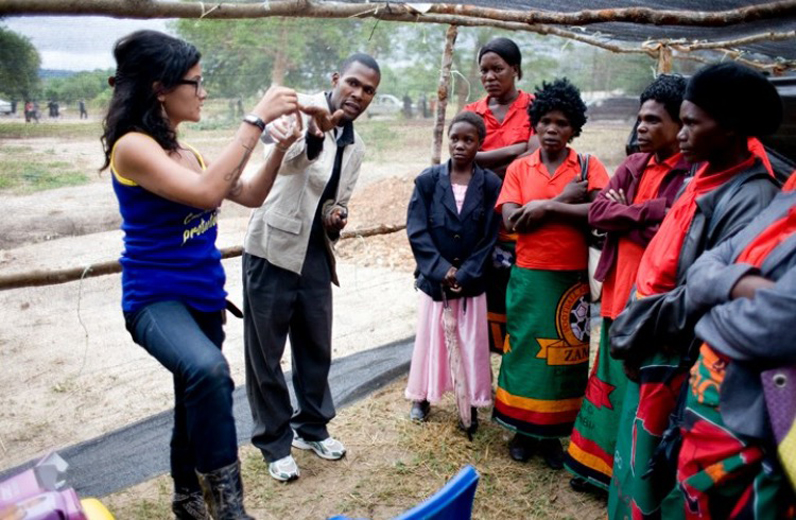
In the World of Medical Apps, Bridging the Divide Between Designers and Clinicians
Want to measure your blood pressure, find out how well your lungs are working, or check your moles for skin cancer? There apps for that.
Too bad most of them aren’t based in scientific fact, says Mae Wiskin, Design Studies ’16. And those that are — the ones developed by qualified clinicians—never make it to market. The issue is a design related: Clinicians have the scientific but not the creative expertise to create apps that provide both accurate diagnoses and engaging user experiences.
Clinicians stand to benefit from designers. But, as Wiskin explains, skepticism has hindered what could be a fruitful relationship.
“Generally, clinicians don’t have a lot of respect for the designers of medical apps, because they operate in a largely unregulated market without any accountability,” she says. “The two sides speak two different languages.”
Wiskin wants to be their translator. A design strategist who studies and teaches at The New School’s Parsons School of Design, Wiskin is a big believer in the power of mobile technology to transform the way health care is accessed and administered. The benefits, she says, are numerous: Patients could do everything from monitoring their caloric intake, vital signs, and blood sugar levels to accessing psychiatric services, appointment schedules, and medical records.
But first, Wiskin has to get the clinicians and the designers talking.
“Mobile technology has permeated clinical practice,” she says. “In order to leverage this phenomenon, clinicians need to adhere to what patients want—and that means having conversations with designers.”
Wiskin lays out the blueprint for her strategy in her master’s thesis. In it, she explores the intersections of emerging mobile technologies, messaging-based behavioral therapies, interaction design, the postproduction economy, and global health. In the tradition of the The New School, she employs a collaborative, design-based approach to problem solving.
It’s a useful strategy in Wiskin’s line of work. Recently, she served as a design researcher and consultant to clinical practitioners at Columbia University who are developing an app to support HIV patients with substance use disorders. Part of Wiskin’s job was to communicate the value of design to mental health professionals dubious of the practice.
“All parties involved spoke different technical languages, so the challenge was getting everyone on the same page,” she explains. “The brilliance and trouble with design is that it fails to adhere to traditional constraints and categorizations. Professionals in more traditional disciplines, meanwhile, tend to stick to the confines of their methodologies.”
As Wiskin has learned, clinicians are skeptical of design with good reason. Over the past year, she has researched claims made by mobile application designers regarding the effectiveness of their products in addressing mental health disorders. Often, those claims fall flat. Still, she says, “clinicians need to be more open to embracing the work of designers,” who can help to create apps that consumers will actually buy.
Wiskin’s interest in health care and mobile technology arose from her experience in the Peace Corps in Zambia. In the rural areas of the southern African country, she observed residents who, despite living in mud huts without running water and electricity, were attached to their cell phones. As an HIV/AIDS counselor, Wiskin confronted the daily challenge of motivating patients to access health care. What better way to dispense that care, she thought, “than through a device that was so integral to their daily lives.”
“No one wanted to come to the clinic because of the enormous stigma attached to HIV/AIDS,” Wiskin says. “It made sense to remind patients to take their anti-retrovirals through a text message so that they could avoid coming to the clinic. I’ve always been interested by how technology shapes behavior.”
After her stint with the Peace Corps, Wiskin continued to cultivate that interest, enrolling at Parsons and pursuing her research. She soon confronted an ever-expanding market of medical apps—many of which made bold, and mostly unfounded, promises to consumers—and a smaller, parallel market of scientifically sound but poorly designed medical apps that never reached the shelves. Wiskin hopes to open the door to medical apps that embody the best of both worlds.
But first she has to get clinicians and designers talking.